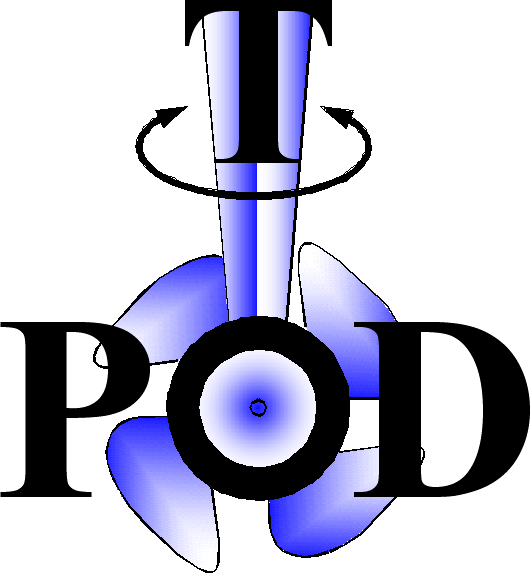


|
|
|
Podded propulsion is increasingly being recognized by ship owners and ship yards as a perfect solution for a broader range of applications. More and more powerful podded propulsion systems – mainly for large cruise liners – have been developed in the last years.. Primary benefits of pod propulsion systems are space saving design, improved efficiency, optimized maneuverability and distinctly lower levels of vibration and noise compared with conventional marine propulsion systems. An efficiency higher than with a conventional system is reported to be achieved. The improved noise behavior is mainly the result of more homogenous inflow conditions to the propeller and of the possibility of using a reduced propeller diameter. Especially for cruise ships the highest level of comfort on board must be guaranteed. Therefore normally extensive model tests are carried out not only for the propulsion behavior but also for the cavitation and noise behavior of the pod and its propeller(s). The nature and the need of specific test arrangements for podded drives are discussed. In the paper results of wake field measurements and of cavitation observations combined with pressure fluctuation and noise measurements mainly in HSVA’s large cavitation tunnel HYKAT for different pod arrangements are presented. The specific problems related to increased ship speed are addressed. For the first time results of cavitation tests with moving pods are discussed. Cavitation tests results not only for the propeller but also for the pod housing are shown and correlations to full scale data are drawn. The test arrangement, mainly the dynamometers used and the test procedures are described. The tests were performed with large propeller models (up to 250 mm in diameter) and with high rotational speeds (up to 35 revs per second) behind whole ship models of 8 to 11 meters in length. The results are additionally compared with data of cruise ships with conventional propeller-shaft arrangements. The data show the excellent possibilities of pod propulsion systems mainly from the cavitation and noise point of view. |
|
Send mail to
tpod@ncl.ac.uk with
questions or comments about this web site.
|